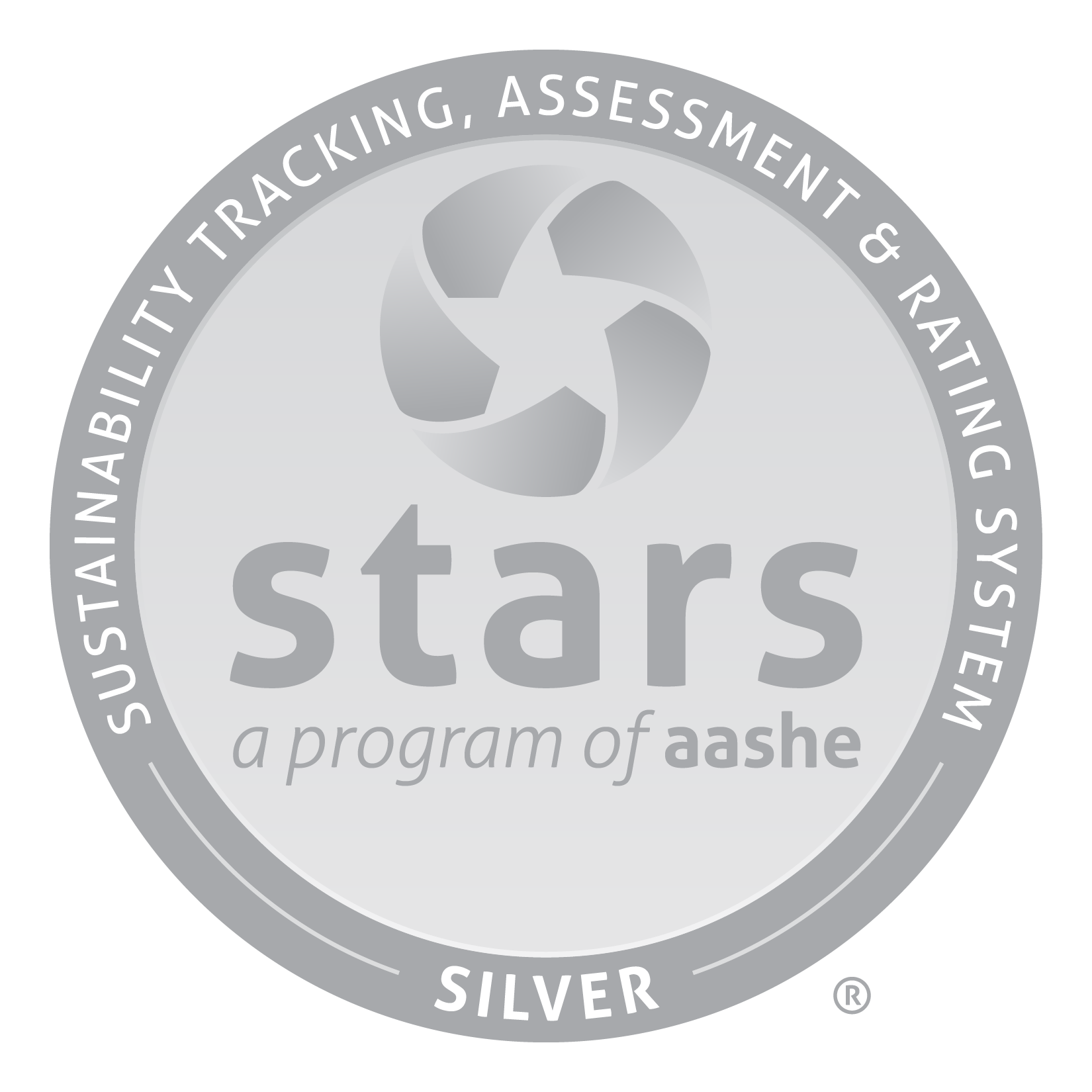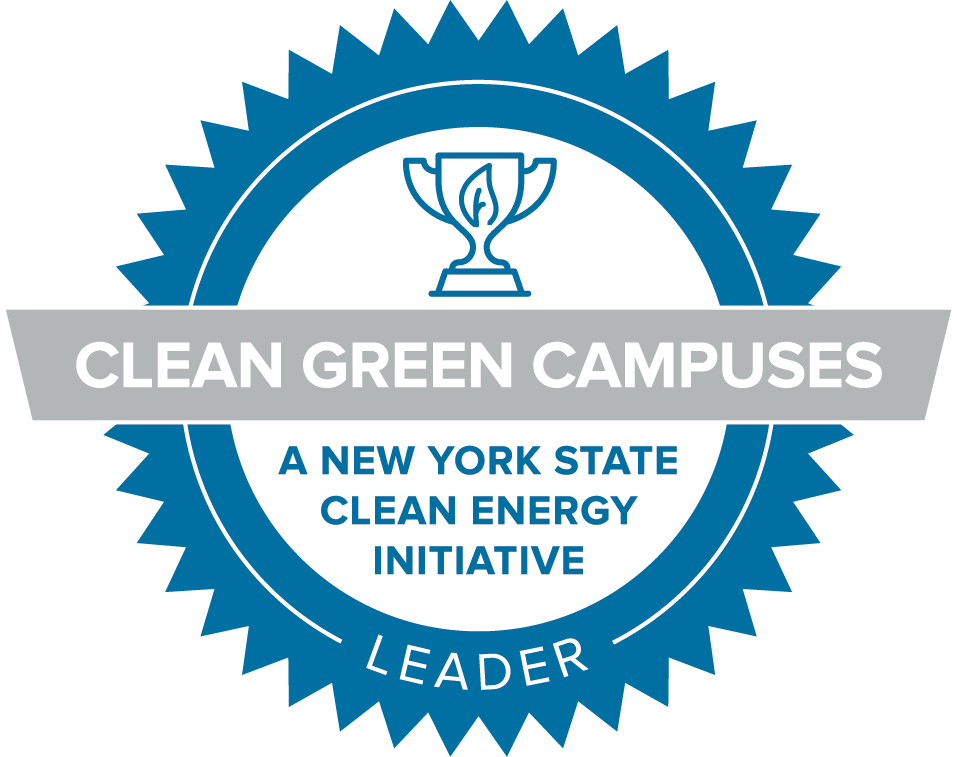Reduce, Reuse, Recycle
The United Nations’ Sustainable Development Goal on Responsible Consumption and Production outlines the inefficiencies and environmental degradation involved with the global market. The goal is to “ensure sustainable consumption and production patterns” (UN SDGs). A specific target for this goal is to “substantially reduce waste generation through prevention, reduction, recycling and reuse”. At Skidmore, our overall waste goal is to increase our diversion rate of waste to 60% by 2025. There are many different organizations on campus and sustainability programs to encourage the reduction and reuse of materials. “Dive Deep” into the issue of our “throw away” consumer culture and learn more about how you can reduce, reuse, and recycle in your daily life.
"Throwaway culture” refers to how our society places emphasis on cheap and disposable products instead of ones meant to last longer- envision the amount of waste from a to-go meal from a restaurant. Oftentimes products are not easily repairable, so it’s easier and more convenient to just buy a new product- take smart-phones and TVs for example. This consumer culture of disposability has resulted in a global issue of how to manage our massive amounts of waste, which is outlined in the Waste page of the Green Guide.
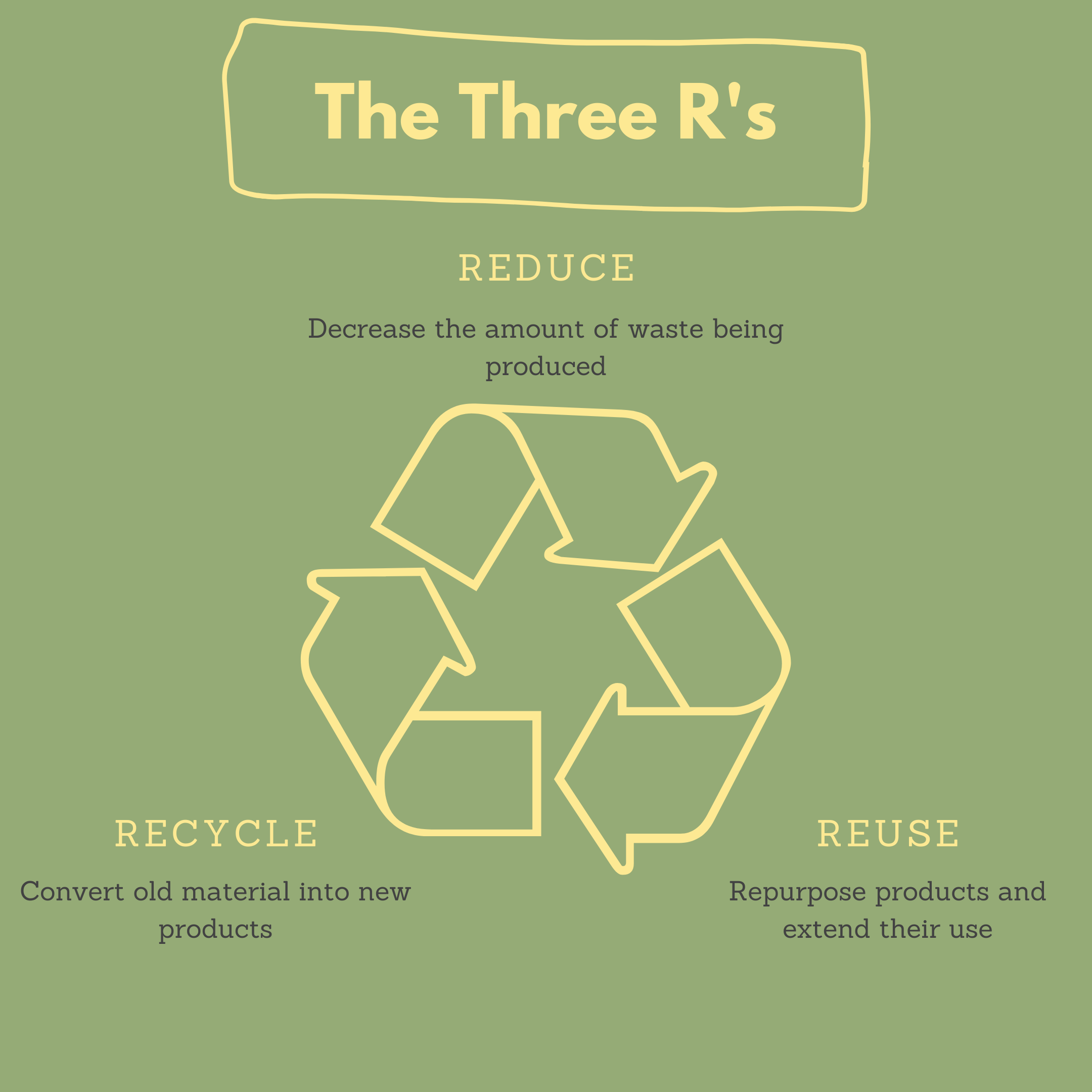
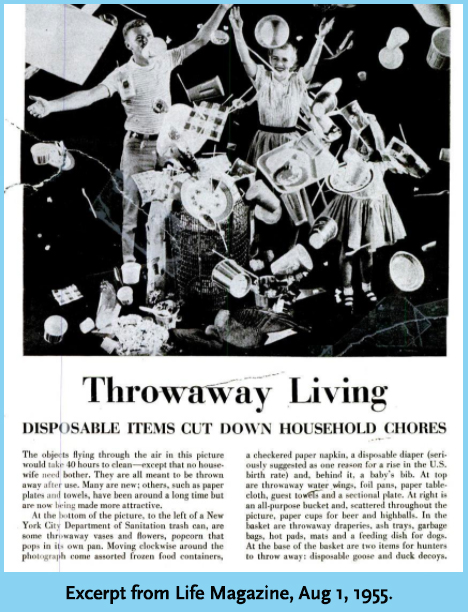
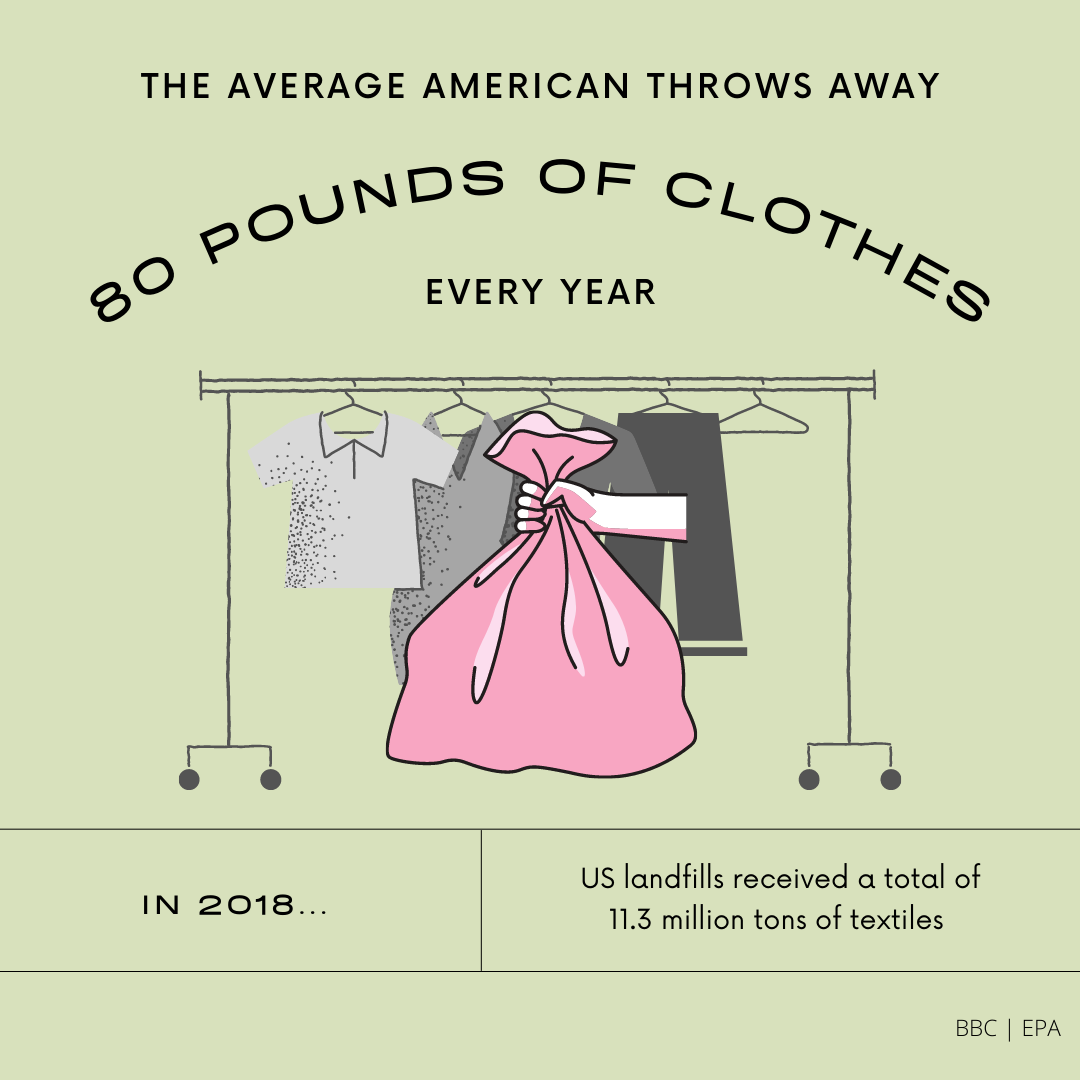
One industry that is also a major contributor to throwaway culture is the fashion industry. In 2018, US landfills received 11.3 million tons of textiles (EPA), with the average American throwing away 80 lbs of clothes every year (BBC).
If clothes were made of 100% cotton, we would likely have fewer issues as clothes easily decay and can even be composted, but upwards of 60% of clothes produced now are made of synthetics (i.e. plastics). These clothes are not made to last more than a couple seasons, even though the plastic fibers making up the clothes will (NYT)! The production of clothing, especially synthetics, requires large amounts of fossil fuels to produce. And even if textiles are made from cotton, it takes a lot of water to produce natural fibers. For example, it takes 1,800 gallons of water to grow enough cotton for 1 pair of jeans (Tree Hugger).
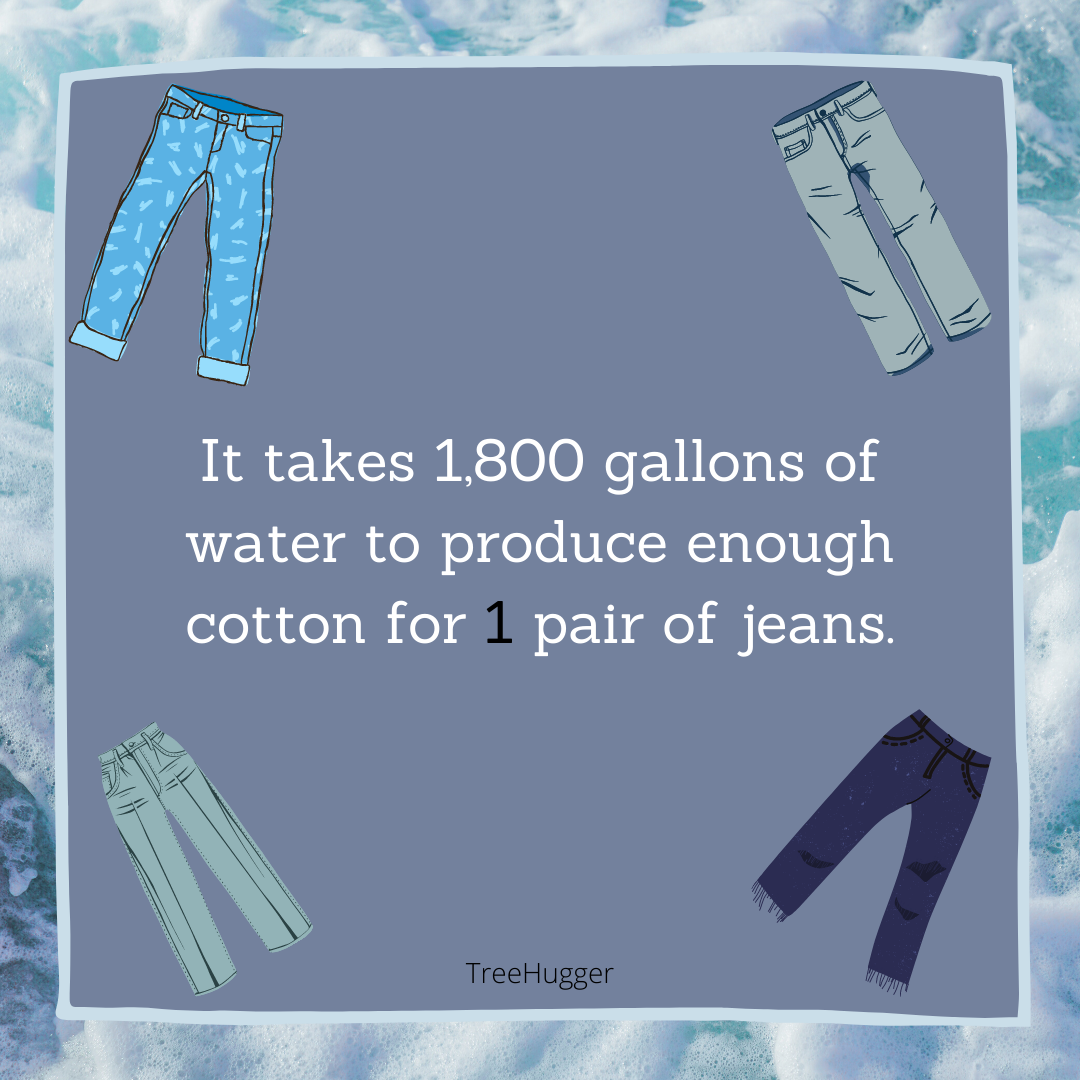
Reducing, reusing, and recycling can be good for your wallet and for the planet.
An easy way you are probably already reducing waste is by renting things or buying them used- for example renting textbooks or buying used ones! You can also rent or buy used clothing items as well, along with a plethora of other things- you don't need to permanently own everything, nor does it have to be brand new. Some other tips for reducing waste as an individual include: printing double sided, avoiding individually wrapped things, buying in bulk, using bars of shampoo and soap instead of plastic packaged liquids. If you want to avoid single-use plastics, aluminium and glass alternatives are increasingly available and affordable.
Reuse what you own: when you do purchase things, try to purchase durable items that you can use multiple times. You can also maintain and fix items that break or need repair to give them a longer life, like patching clothing or repairing appliances. Also, remember that you can purchase used items. There are plenty of online and in-person platforms for buying items second-hand (EPA). Investing in reusable bags, water bottles, tupperware, metal straws, silverware, napkins/hand towels etc can save money, help you reuse, and decrease your use of single-use plastics.
When items can not be reused, please recycle them whenever possible. This way they do not end up in landfills. At Skidmore you can recycle cardboard, glass, metal, paper and plastics #1-7. All items need to be cleaned out and boxes broken down before they can be recycled.
Tips for Living In Dorms:
- Reduce: if you don’t like the taste of tap water in dorms, use water bottle refill stations instead of single-use plastic bottles. Avoid single use plastic snacks when possible, or choose items that can be recycled
- Reuse: reusable water bottles, coffee mugs, etc. Try keeping personal cloth hand towels instead of using paper towels in the bathroom.
- Recycle: All dorms have zero-sort recycling receptacles in the hallway closets and in the
kitchens.
-
- Tip! Keep a cardboard box in your room as a recycling bin so you're more likely to recycle.
-
Tips for Living In Apartments & Off-Campus:
- Reduce: During move-in, plan with your housemates who is bringing what so you don’t buy more than you need!
- Reuse: When shopping, try switching out disposable products for reusables, like cloth hand towels, cloth napkins, and tupperware (instead of plastic wrap). Consider a water filter instead of plastic water bottles. You’ll save money long-term and eliminate potential waste.
- Recycle: Recycle as much as you can and as well as possible.
- Blue or green curbside style bins are provided to all on-campus apartments and residents are responsible for depositing recycling in the dumpsters located outside in the parking lots in Sussman and Northwoods villages. If you do not have a recycling bin, you can submit a Work Order to Facilities to order a replacement.
- If you live off-campus, see these Recycling Guidelines for Saratoga County. Your landlord may provide you a recycle bin or you may need to drop off your recyclables to a Recycling Center.
Skidmore Resources:
- Skidmore College Student Swap and Sell is a Facebook page to exchange textbooks, clothes, furniture and more.
- The Skidmore College Bookstore will buy back books in the Spring.
- The Skidmore Exchange Closet program “provides free clothing, shoes, and accessories to ALL students to be able to fully and authentically present themselves."
- Pop-up "clothing swaps" hosted by the Sustainability Office or student clubs are a great opportunity to drop off unwanted items and come home with fun, new-to-you items. Reach out to the Sustainability Office or the Exchange Closet if you want to collab!
Thrift stores in the area:
- Noah’s Attic in Ballston Spa for clothes and homegoods
- Rebuilding Together Saratoga in Ballston Spa for furniture
- Treasures Thrift Shop in Saratoga Springs for clothes and homegoods
